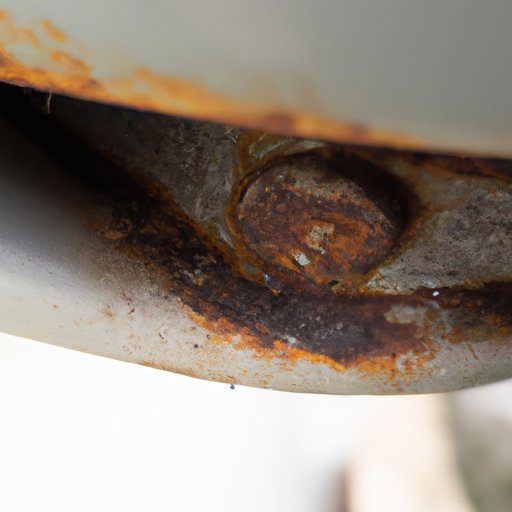Understanding the Science of Rust: How It Forms and Damages Metal
From beloved family heirlooms to everyday objects like tools and appliances, metal items are often cherished for their durability and long-lasting appeal. But over time, metal can develop a pesky and unsightly problem: rust.
Rust is a type of corrosion that forms when iron or steel is exposed to oxygen and moisture for extended periods of time. Left unchecked, rust can weaken the structure of metal items, causing them to fail and break down over time. In addition to causing physical damage, rust can also pose health hazards if it forms on food containers or other items you come into contact with.
The Science Behind Rust: What It Is and How It Forms
Rust is formed through a chemical reaction called oxidation. When iron or steel is exposed to water and oxygen, the iron atoms in the metal react with the oxygen to create iron oxide, also known as rust.
Moisture is a key factor in rust formation. Water can penetrate even the smallest cracks in metal and provide the oxygen needed for oxidation. In addition to moisture, other environmental factors such as temperature and humidity can also contribute to rust formation.

Rusty Problems: The Damage and Impact of Rust on Your Belongings
While rust may seem like a harmless cosmetic issue, it can actually cause serious damage to metal items over time. Rust weakens the structure of metal, making it more prone to breaking or failing under stress. This is especially dangerous in items like bridges or building supports, where rust can compromise the structure’s integrity and lead to catastrophic failure.
Rust can also be a detriment to items beloved for their aesthetic appeal, like antique cars or metal sculptures. Severe rusting can cause discoloration, pitting, and flaking, which can require extensive and costly repairs.
Preventing Rust: Tips and Tricks to Keep Your Metal Items Looking Like New
Preventing rust is a crucial step in preserving your metal items and avoiding costly repairs or replacements. One of the best ways to prevent rust is to minimize exposure to moisture. This can be accomplished by storing items in dry, well-ventilated areas, using dehumidifiers or moisture-absorbing packs, and avoiding contact with water as much as possible.
Another effective way to prevent rust is to apply a protective coating to metal items. This can include painting, oiling, or using rust inhibitors to create an additional barrier between the metal and moisture or oxygen.
Proper maintenance and care can also go a long way in prolonging the lifespan of metal items and reducing the likelihood of rust formation. This includes cleaning and drying items thoroughly after use, regularly inspecting items for signs of rust or damage, and using appropriate lubricants to protect moving parts and joints.
Why Some Metals Rust Faster than Others: Exploring Rust Formation in Different Metals
While all metals are at risk for rust formation over time, some types of metals are more prone to corrosion than others. Factors like the chemical composition of the metal and its alloying elements can affect rust formation rates. For example, stainless steel is known for its resistance to rust due to its high levels of chromium, while copper is more prone to corrosion due to its softness and susceptibility to moisture.
Rust Removal Methods: How to Get Rid of Rust and Save Your Items
If rust has already formed on a metal item, there are several methods for removing it and restoring the metal’s appearance and structural integrity. One popular method is sanding, which involves using abrasive tools to remove the rust and create a smooth surface. Chemical rust removers are also an option, but should be used with caution and protective gear as they can be harsh and potentially harmful if not used correctly.
It’s important to note that rust removal should be done carefully and with proper protective gear. Removing rust can create hazardous dust and chemicals that can be harmful if inhaled or ingested. Additionally, in some cases, it’s important to consult with a professional to determine the best course of action to avoid further damage or harm.
Conclusion: Tackling Rust Head-On
Rust may be an unsightly and persistent problem for many metal items, but it doesn’t have to be a death sentence for your beloved possessions. Understanding the science behind rust and taking preventative measures can go a long way in avoiding corrosion and prolonging the lifespan of your metal items. And if rust has already taken hold, there are plenty of safe and effective methods for removing it and restoring your items to their former glory.
Remember, addressing rust early on is key in preventing long-term damage or hazardous situations. By taking a proactive approach to rust prevention and removal, your metal items can continue to shine and stay rust-free for years to come.
